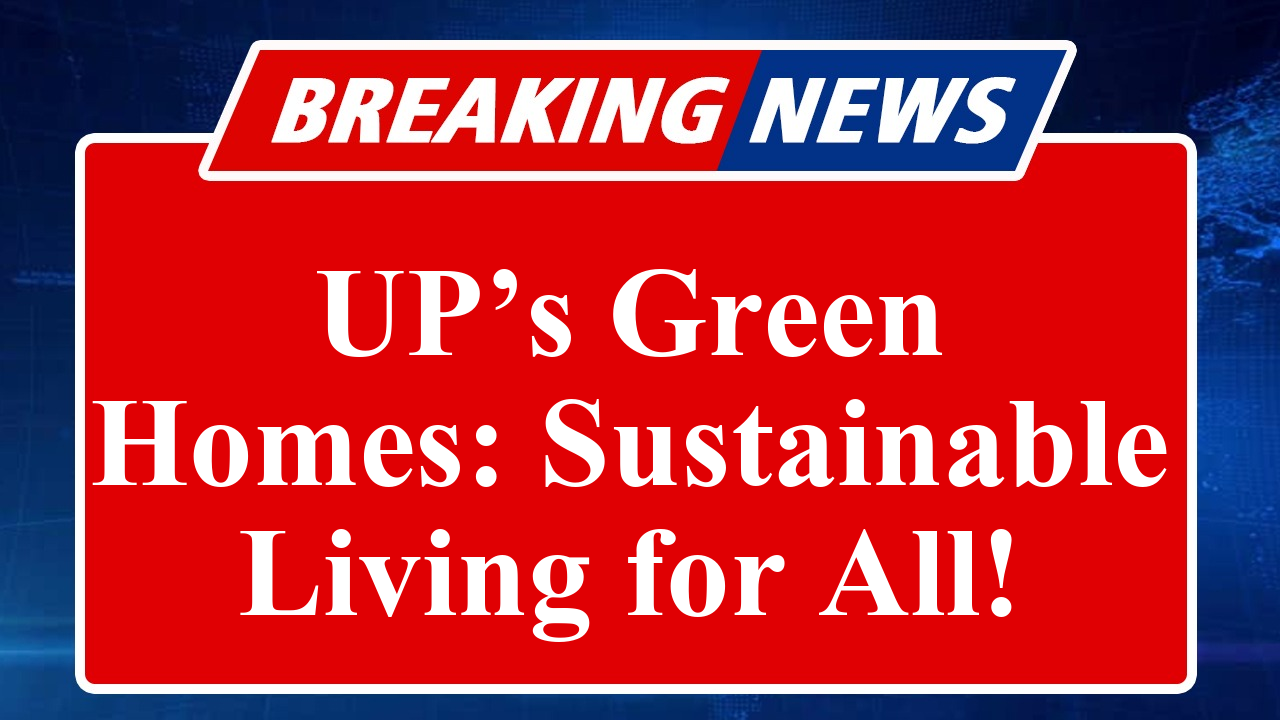UP is leading India’s sustainable urban development with innovative eco-friendly housing schemes. From energy-efficient designs to affordable green homes under PMAY, these initiatives reduce carbon footprints and promote healthier living. With government support and private partnerships, UP’s green cities are setting a benchmark for environmental consciousness in India’s real estate sector.
UP’s Path to Sustainable Living: Eco-Friendly Housing Initiatives
Uttar Pradesh (UP), one of India’s most populous states, is undergoing a transformative shift towards sustainable urban development through eco-friendly housing schemes. With rapid urbanization and a growing demand for affordable housing, the state is integrating green building practices to address environmental concerns while ensuring accessible living spaces. These initiatives align with national goals like the Pradhan Mantri Awas Yojana (PMAY) and global sustainability targets, positioning UP as a leader in India’s green revolution.
The state’s focus on green cities is evident in projects that incorporate energy-efficient technologies, sustainable materials, and renewable energy sources. For instance, housing developments in cities like Noida and Greater Noida are adopting features such as solar panels, rainwater harvesting systems, and low-VOC (volatile organic compound) paints to enhance indoor air quality. According to the Indian Green Building Council (IGBC), green homes in UP have achieved energy savings of up to 30% and water savings of up to 50%, significantly reducing utility costs for residents.
Under PMAY, UP has launched affordable green housing projects targeting low-income and economically weaker sections (EWS). These homes utilize locally sourced, eco-friendly materials like fly ash bricks and compressed earth blocks to minimize environmental impact. A notable example is the Aspire Centurian Park in Greater Noida, an IGBC-certified project that blends affordability with sustainability through solar streetlights and permeable pavements. Such developments not only reduce carbon emissions but also promote healthier living environments by prioritizing natural ventilation and lighting.
The UP government is actively supporting these initiatives through policies and incentives. The state’s adoption of the Green Rating for Integrated Habitat Assessment (GRIHA) and IGBC’s Green Homes Rating System ensures that new constructions meet stringent environmental standards. Financial incentives, including subsidies and tax benefits, are encouraging developers to integrate green technologies. For example, the use of bamboo and recycled wood in construction is gaining traction, with UP’s recent policy shifts allowing timber in public buildings after a 27-year ban, as reported by Wood Central in June 2024.
Private sector collaboration is also driving UP’s green housing movement. Developers like Godrej Properties are spearheading projects such as Godrej Woods in Noida, which combines luxury with eco-conscious design. These projects incorporate IoT-enabled systems for energy optimization and wastewater recycling for gardening, setting a precedent for smart, sustainable living. Additionally, startups like ZunRoof are making solar solutions accessible through rent-to-own models, further democratizing green technology for UP’s residents.
Community engagement is another cornerstone of UP’s green city vision. Awareness campaigns and workshops are educating residents about sustainable practices like composting and recycling. In cities like Lucknow and Kanpur, community gardens and electric vehicle charging stations are being integrated into housing societies, fostering a culture of environmental responsibility. The state’s efforts align with India’s commitment to reducing carbon emissions by one billion tonnes by 2030, as highlighted at COP-26.
Despite these advancements, challenges remain. High initial costs for green technologies can deter developers, though long-term savings offset these expenses. Additionally, the availability of sustainable materials like Glass Fibre Reinforced Gypsum (GFRG) panels, once pioneered by IIT Madras, has dwindled due to production halts. Addressing these gaps through innovation and policy support is crucial for scaling UP’s green housing initiatives.
The state’s progress is measurable. Over 50 residential societies in UP, covering approximately 20 million square feet, have adopted IGBC’s green rating systems, as per the World Green Building Council. These projects not only reduce environmental impact but also enhance residents’ quality of life through better air quality and lower operational costs. With urbanization projected to exceed 50% by 2050, UP’s eco-friendly housing schemes are a blueprint for sustainable urban growth across India.
Disclaimer: This article is based on recent reports, industry insights, and publicly available data from sources like the Indian Green Building Council, World Green Building Council, and media outlets such as Wood Central and The Hindu. Information is intended for informational purposes and may not reflect real-time developments.

